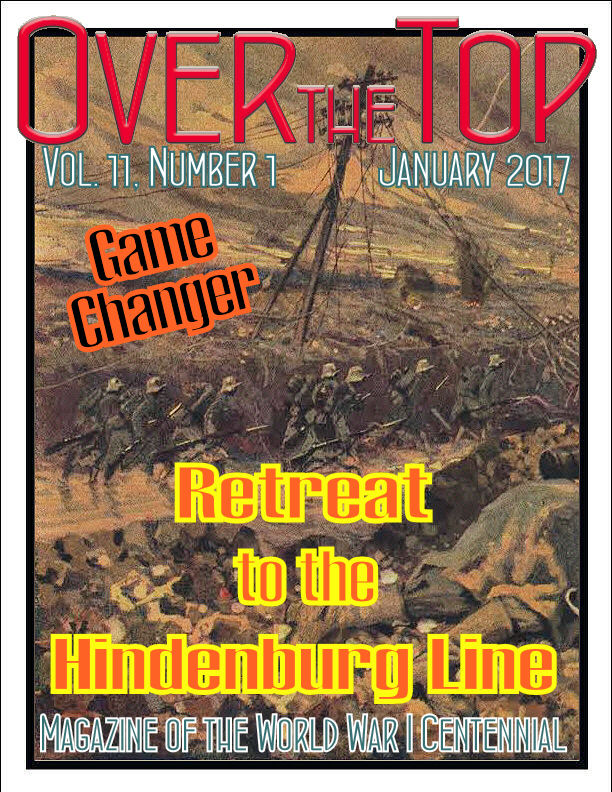
January
2017 |
 |
|
|


What Had Happened in 1916?
One of the most fascinating aspects of the First World War is how it evolved from year to year. It started out as a sort of European civil war between two large coalitions that quickly expanded to other continents and most of the world's oceans, making it a world war. Concurrently, as the initial war plans failed, what all the belligerents hoped would be a quickly resolved war of movement surprisingly got locked into a positional, attritional war.
Trench warfare — or rather, breaking through the trenches — required stupendous amounts of artillery and shells. Industrial production quickly became a critical element of each nation's war-making capability. Those civilians who worked in those factories were understood by the war leaders to be collectively as important as the soldiers on the battlefields. So, weren't they, also, legitimate targets? Thus were blockades, aerial bombardment of cities, and starvation of populations justified. It was a very logical slide into what is called "Total War."
This was the arc of the Great War through, say, the start of 1916. But the evolutionary process did not cease then. In World War II, Marshal Stalin had a quote pertinent to the 1916 campaign, "Quantity has a quality all of its own." The chapters on the year 1916 in some histories have a title something like: "The Year of the Big Battles." Well, here's a quantity/quality of big battles — they kill lots of people. The greatest strategic and human disaster of 1916 was that by its end, the combatants were starting to run out of able-bodied men. New drafts of the unwilling, teenagers, and geezers made out of desperation were no long-term solution. Besides, they would run out of these bodies, too, soon enough.
By the end of 1916 it was dawning on the various war leaders that defeat through sheer exhaustion of manpower – and willpower – was a real possibility. The life and death of nations and empires were at stake now. The answer to "What had happened in 1916?": the war afterward became a more intense and desperate matter of survival for the belligerents, leading them in 1917 to double down on their bets (even bigger battles or unrestricted submarine warfare) or to collapse from within as in Russia.
MH

|
2017
Remembering WWI Through the Eyes of a Veteran
Thursday — 9 January 2017, 5:30 p.m. at the
Archibald Library, Rutgers University, NJ. The story of Charles Edward Dilkes, 1st Engineers of the 1st Division presented by by Dr. Virginia A. Dilkes. EMAIL
League of WWI Aviation Historians — Mid-Atlantic Chapter Meeting
Saturday — 14 January 2017, 10 a.m.-5:30 p.m. at the
National Air and Space Museum's Steven F. Udvar-Hazy Center on the Hangar Floor Level. Topics include the Red Baron's first command, bombing campaigns 1916, Navy/Marine Corps Northern Bombing Group, and a preview of the new Lafayette Escadrille documentary. EMAIL
|
|
Poster of the Month
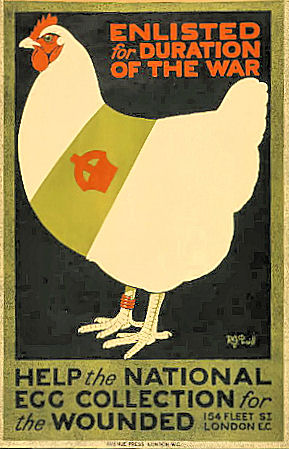
We Will Feature a Unique War Poster Here Each Month in 2017, Nominate Your Favorite HERE

The Battles of 1917
The previous year had produced some of the most memorable battles of the war — Verdun, the Somme, Jutland, and the Brusilov Offensive — but 1917 would be just as active. Here is a list of of some the most memorable to allow you to brush up for their coming Centennial commemorations.
 Arras & Vimy Ridge
Arras & Vimy Ridge
 Nivelle Offensive
Nivelle Offensive
 Messines
Messines
 Passchendaele
Passchendaele
 Kerensky (Second Brusilov) Offensive (PDF file)
Kerensky (Second Brusilov) Offensive (PDF file)
 The March to Baghdad
The March to Baghdad
 Caporetto
Caporetto
 Cambrai
Cambrai

One Candidate for Best Unknown
General
of the War
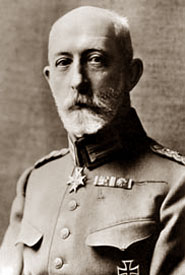
General Felix Graf von Bothmer (1852-1937) was a veteran of the Franco-Prussian war who had served for 40 years with the Bavarian Army before the Great War broke out. After a brief tour in Flanders in 1914, he was shifted to the Eastern Front where he seems to have defeated both Austrian and Russian forces whenever he encountered them. His successes included the defense of the Carpathian passes, actions along the Dniester and Gnila-Lipa Rivers, and victories in his zone of responsibility during both the Brusilov and Kerensky offensives.

Keeping Still
I think it better that in times like these
A poet keep his mouth shut, for in truth
We have no gift to set a statesman right;
He has had enough of meddling who can please
A young girl in the indolence of her youth,
Or an old man upon a winter's night.
W.B. Yeats
|

|

U.S. Centennial Organizations & Resources
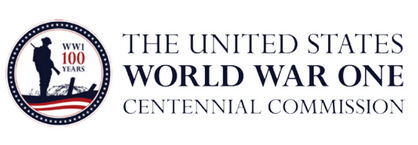
worldwar-1centennial.org/
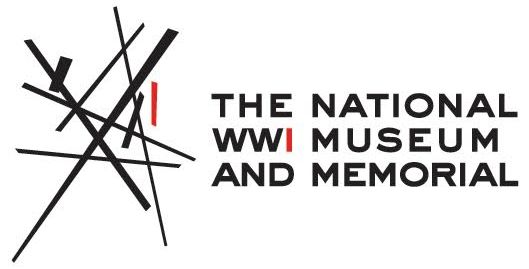
theworldwar.org/
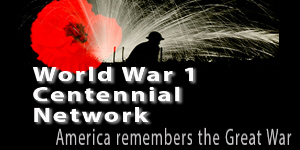
www.ww1-centennial.org/

www.firstdivisionmuseum.org/

www.abmc.gov/
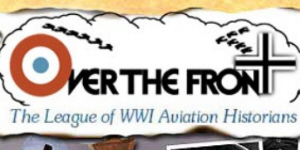
www.overthefront.com/
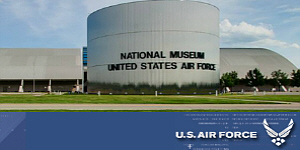
www.nationalmuseum.af.mil/

www.worldwar1.com/dbc/
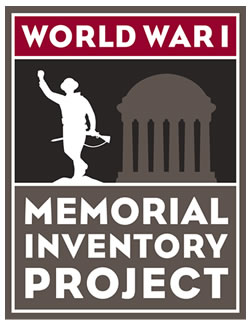
facebook.com/wwiinventory

wisconsinhistory.org/
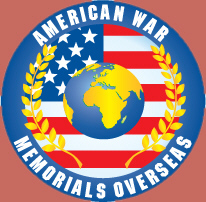
www.uswarmemorials.org/

www.macarthurmemorial.org/

www.saving-hallowed-ground.org/
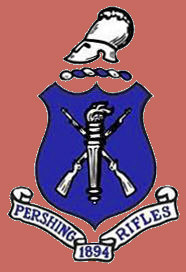
www.theprgroup.org/

pamilmuseum.org/
Support Worldwar1.com's Centennial Effort
Shop at Amazon.com
|
The Centennial Ticker
American War Memorials Overseas

A parallel resource to Mark Levitch's World War I Memorial Inventory Project, which covers our stateside WWI monuments, is Lillian Pfluke's great Centennial asset, American War Memorials Overseas.

Founder Lillian Pfluke |
After moving to Paris, France, in 1995, she spent ten years working for the American Battle Monuments Commission as the Private Memorials Administrator of the European Region in their Paris office. The U.S. Federal government, via the American Battle Monuments Commission, beautifully cares for 24 overseas cemeteries and 25 memorials. They have neither the authority nor the resources to care for thousands of other sites honoring Americans. In 2008 Lillian founded a nonprofit organization to help record the existence and location of nongovernmental war memorials honoring Americans, monitor their condition, and facilitate their maintenance and preservation. Besides all of the above, American War Memorials Overseas is incredibly valuable for visitors to the battlefields. I've referred to Lillian's data base numerous times to help with planning my tours to American battlefields.
Here is one partial World War I example, for the 4th Division of the AEF, from the 1,383 entries in her database (about 15% of these are related to the Great War). Besides photos of the memorial and lots of interesting details, notice that it has the single most important resource for battlefield tourists, a map to help you find it:
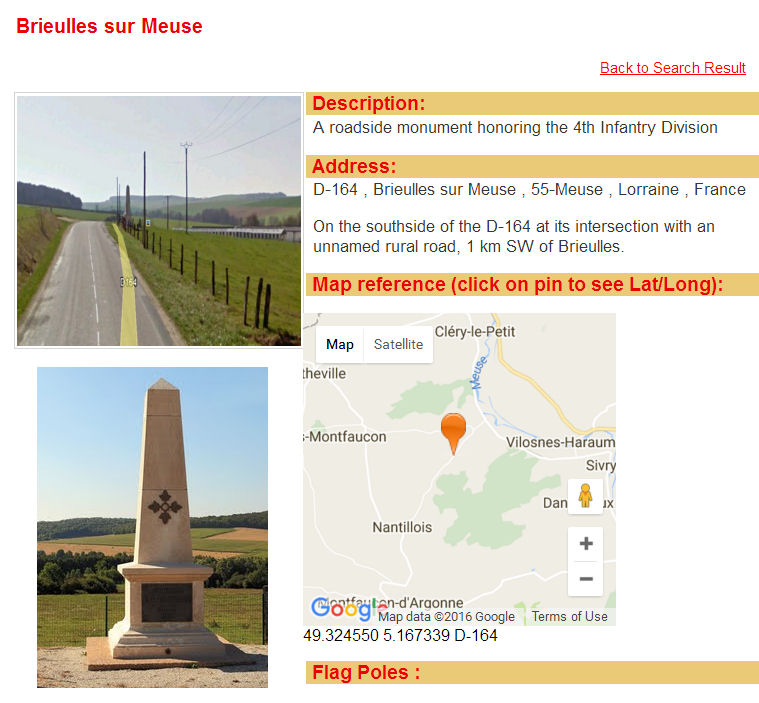
Please Support Lillian's Effort to Preserve Our Military Heritage
We have a link to American War Memorials Overseas in the sidebar on the left column.
This Is THE DAY (Der Tag)!
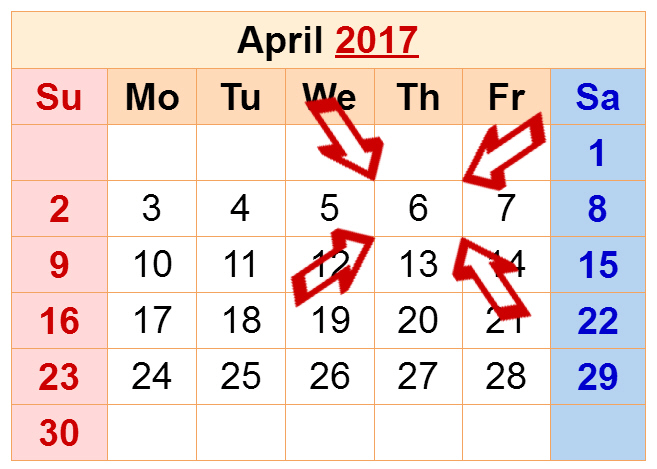
The coming 6th of April will be the biggest day for America's World War One Centennial Commemoration. Granted the 11th of November will be a big day for all the countries that participated in the war, but 6 April 1917 and 2017 are days uniquely tied to the United States. These are the date and the 100th anniversary of the nation's declaration of war. All the world's media, which has pretty much ignored the U.S. involvement in the war up to now (readers of all my publications at Worldwar1.com know that the U.S. had lots of involvement in the war between August 1914 and the spring of 2017) will be including the declaration in their daily coverage.
More importantly, the Centennial Commission and the other groups and institutions involved in the commemoration have decided that this is THE DAY to remember the nation's sacrifices in the Great War here in the States. Worldwar1.com (especially here in the Trip-Wire and our daily blog, Roads to the Great War) will be covering all the efforts, national and local. Please plan to take a moment to remember America's heritage on 6 April. Try to attend any events that might be held in your area. Their organizers will certainly need help, so please consider volunteering. This will be the single greatest opportunity to remind our citizens, especially our young people, about the importance of the war to the development of our country.
Perhaps start our own coverage with a reminder of what happened on that momentous day. After President Wilson's call for America to join the war on Monday 2 April, both houses of Congress approved this resolution, which was signed by the president on the following Friday.
|
Joint Resolution Passed by the United States Senate and House of Representatives
Effective April 6, 1917, at 1:18 p.m.
WHEREAS, The Imperial German Government has committed repeated acts of war against the Government and the people of the United States of America; therefore, be it
Resolved, by the Senate and House of Representatives of the United States of America in Congress assembled, That the state of war between the United States and the Imperial German Government, which has thus been thrust upon the United States, is hereby formally declared; and
That the President be, and he is hereby, authorized and directed to employ the entire naval and military forces of the United States and the resources of the Government to carry on war against the Imperial German Government; and to bring the conflict to a successful termination all the resources of the country are hereby pledged by the Congress of the United States.
|
This Was the Only Image I Could Think of For This Spot
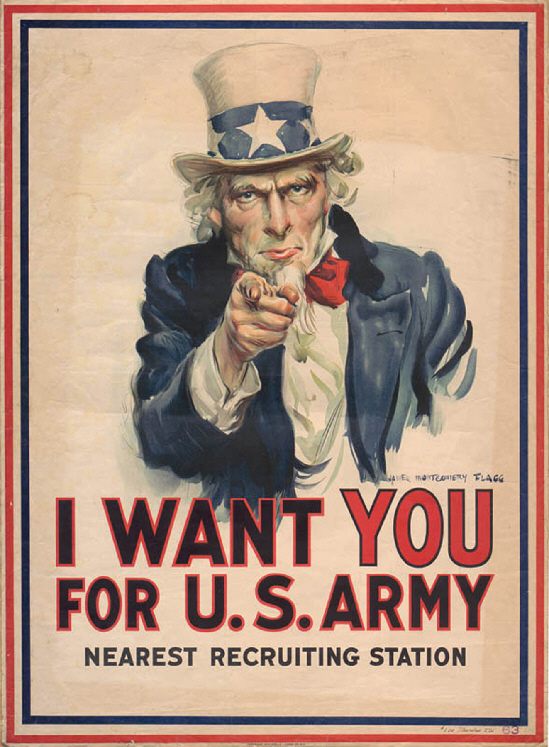
|
|

31 January 1917
Germany Notifies U.S. of
Unrestricted U-boat Warfare
I command that unlimited U-boat warfare begin on
February 1 with all possible vigor. You will please take
all necessary measures immediately but in such a way
that our intention does not become apparent to the
enemy and to neutrals in advance. Basic operational
plans are to be laid before me.
Wilhelm II, 9 January 1917
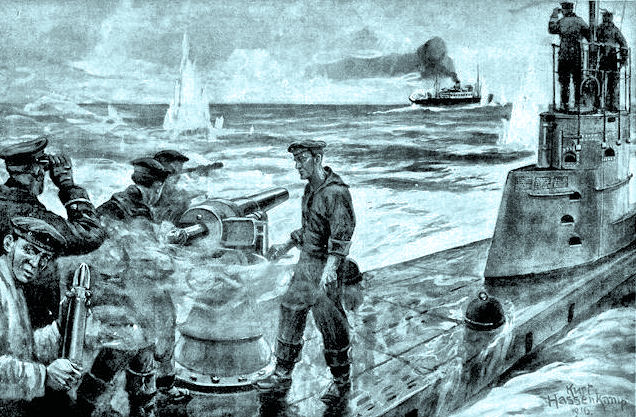
German Deck Crew Firing at a Civilian Ship
The decision to initiate unrestricted U-boat warfare,
implemented by Germany on 1 February 1917, was one of the
most fateful of the 20th century. In hindsight, it was
clearly a grave error by Kaiser Wilhelm II and his advisers.
The decision followed a long and acrimonious
debate involving all sectors of German society. There
was great disagreement down to the final hour, especially
regarding breaking existing international law and
potentially provoking the United States into joining the
war on the side of the Allies.
It was an end to the war through military victory
and a German-directed peace (Siegfrieden). The key to
their ambitions lay with U-boats loosed to pursue
unrestricted submarine warfare. Better to play va
banque, all or nothing, in a single decisive action. The
U-boat would win the war.
The decision was kept secret and America was not notified until the last day of January, the eve of the start of the new strategy. The government-to-government note read in part:
Since the attempts to come to an understanding
with the Entente Powers have been answered
by the latter with the announcement of an
intensified continuation of the war, the Imperial
Government — in order to serve the welfare of
mankind in a higher sense and not to wrong its
own people — is now compelled to continue the
fight for existence, again forced upon it, with
the full employment of all the weapons which
are at its disposal.
Sincerely trusting that the people and the
Government of the United States will understand
the motives for this decision and its
necessity, the Imperial Government hopes that
the United States may view the new situation
from the lofty heights of impartiality, and assist,
on their part, to prevent further misery and
unavoidable sacrifice of human life.
Enclosing two memoranda regarding the details
of the contemplated military measures at sea, I
remain, etc.
Delivered to Secretary of State Lansing
31 January 1917
Source: Over the Top: Magazine of the World War I Centennial,
November 2016
|
|

Our 2017 & 2018 Centennial Battlefield Tours
Now Accepting Bookings For All Tours
2017
Flanders 1917 Campaign
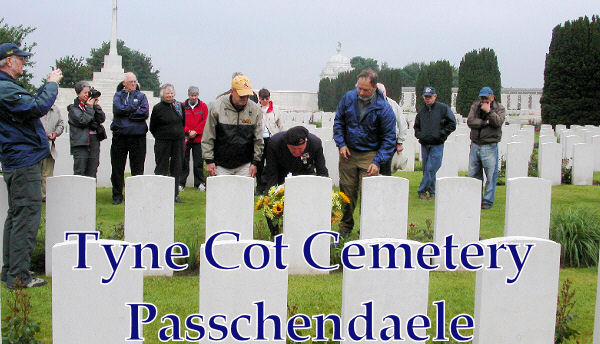
8 – 15 May 2017: The Most Memorable Battles of Flanders Fields
Includes: Vimy Ridge, Messines, and Passchendaele
Price — $3,490 (dbl occupancy, sgl supp avail)
The full brochure covering the trip and registration details can now be downloaded
HERE
Caporetto and the Italian Front
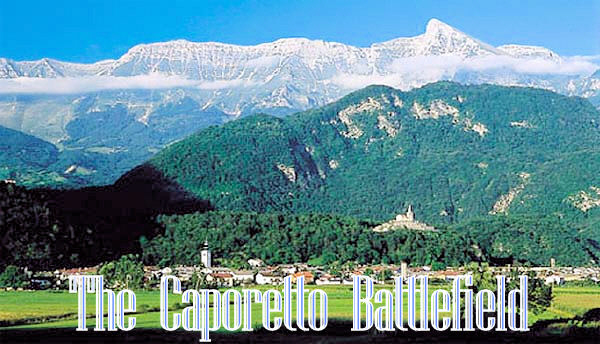
25 July – 4 August 2017: The Most Important Battle of the Italian Front
Includes: The Eleven Battles of the Isonzo, Caporetto 1917, Monte Grappa, and Vittorio Veneto
Reduced Price — $3,950 (dbl occupancy, sgl supp avail)
The full brochure covering the trip and registration details can now be downloaded
HERE
2018
Kaiser's Offensives &
the British Army's 100 Days
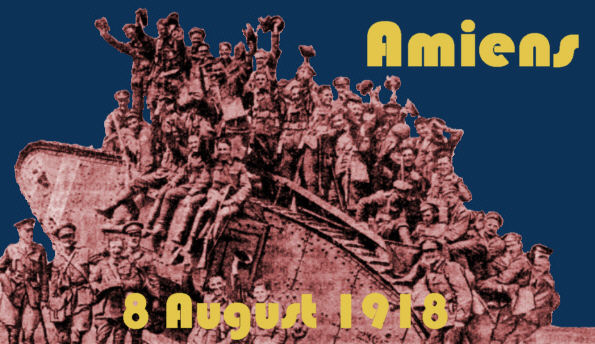
6 – 14 May 2018: Study of Germany's Last Effort to win the War and the British Victory offensive.
Includes: German advances in the Somme, Flanders and the Marne Sectors, the Black Day of the German Army, the St. Quentin Canal, and the pursuit to Mons.
Price — $3,950 (dbl occupancy, sgl supp avail)
The full brochure covering the trip and registration details will be available next month.
AEF: Pershing's Doughboys Centennial
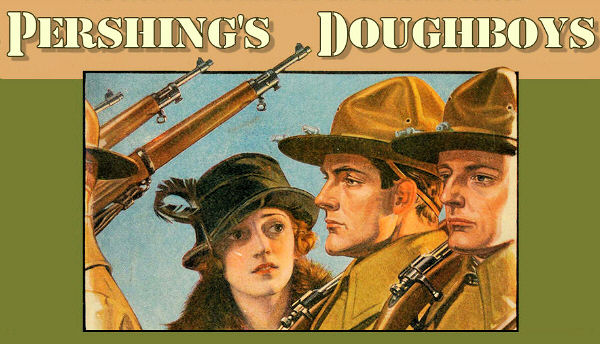
7 – 17 August 2018: Comprehensive Study of the American Expeditionary Force
Includes: All major battles, memorials, cemeteries and service sites of your family members.
Price — $3,750 (dbl occupancy, sgl supp avail)
The full brochure covering the trip and registration details can now be downloaded
HERE
|
|
Thanks to each and every one of you who has contributed material for this issue. Until our next issue, your editor, Mike Hanlon. |
|
 (Or send it to a friend)
(Or send it to a friend)
|
Design by Shannon Niel
Content © Michael E. Hanlon
|









